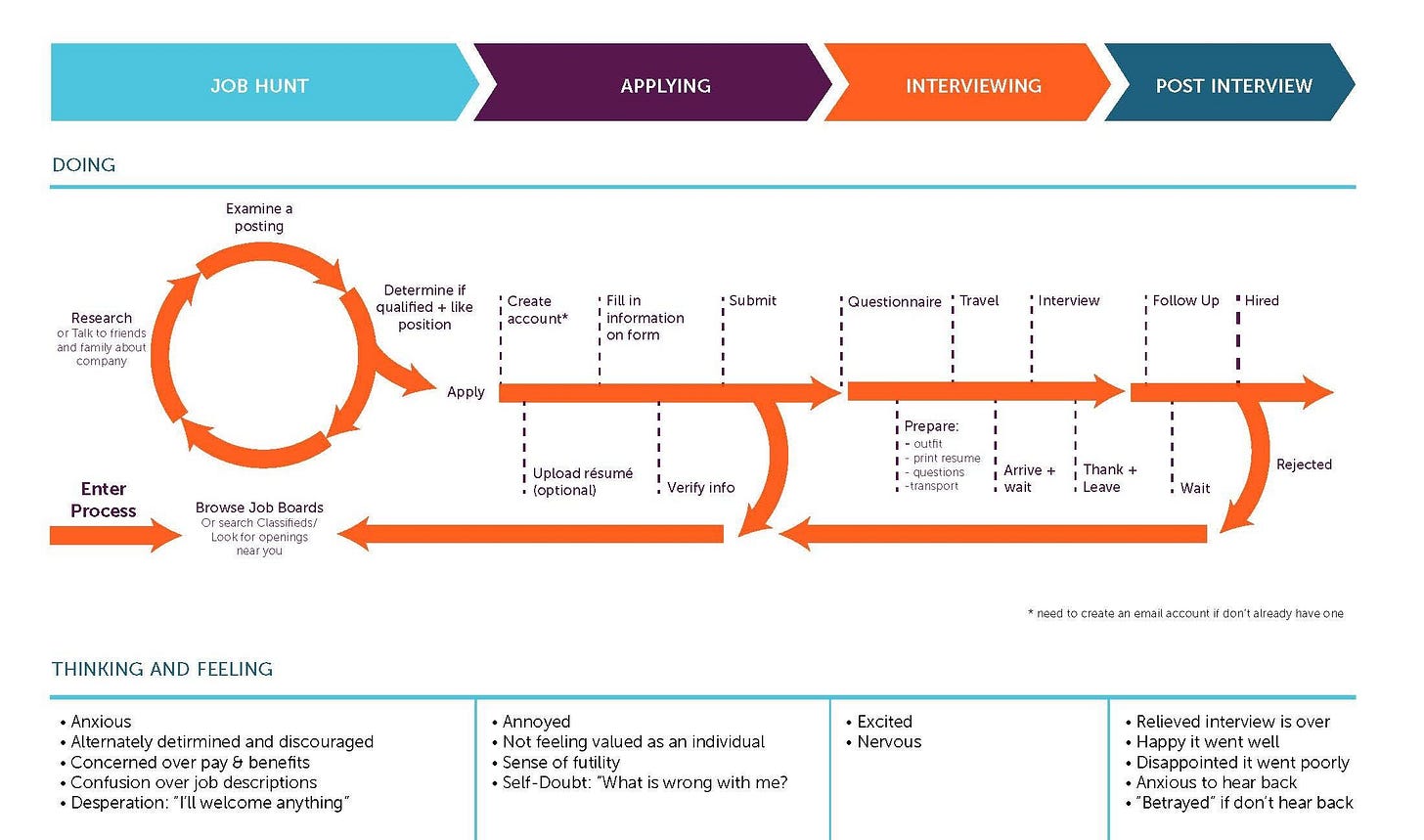Hi, I’m James. Thanks for checking out Building Momentum: a newsletter to help startup founders and marketers accelerate SaaS growth through product marketing.
SPONSORED
Capture customer feedback at scale with Vouch
In this 1 minute video, powered by Vouch, James shares 3 ways customer feedback can help your business grow faster. Watch it here.
Vouch is a video collection platform, perfect for customer feedback. Create fast feedback loops that collect customer insights 24/7. Just add your questions and share the link through your campaigns, automation flows or website.
Think about the products and tools you use at work and in your personal life.
Everything you use is designed to help you accomplish a task in a particular way. A job-to-be-done, with success criteria. Therefore, nothing in life is purely functional. Everything is functional, plus something else.
- Your shower gel might rid you of dirt – and also have a nice smell to make your shower more enjoyable.
- The sofa you sit on is comfortable to sit on – but is also a visible signifier of your design choices (budget notwithstanding)
- The laptop or phone you’re using right now? An all-in-one lifestyle device to help you live life the way you want to
- The CRM your sales team use is not just a record-tracking tool, it’s a decision-making platform for business growth
All of the product design choices and all of the marketing, sales, positioning, messaging decisions were consciously defined to not just be functional, but to help you achieve the job and meet the success criteria.
Now think about the software you market or sell.
Are you just selling task completion – or are you actually selling more than that? And if you are… what would change if you decided to do so consciously?
In this post:
We build software, but sell outcomes
We shouldn’t be marketing or selling software. We should be selling value, an outcome that your customer wants to attain that:
- Is useful
- Is worth the effort (cost, time, energy)
- Is a priority for them
Sometimes this value is clearly messaged, linking the features of your product through benefits to value. I call this a ‘value nugget‘.

Sometimes, that value ISN’T communicated well – and it becomes muddy, confusing, damaging.
Without a clear understanding of the value your customers desire – and why – you’ll find it harder to sell and market. Functional messaging is obtuse: a blunt and binary approach.
But when you sell value, you create more. The whole of the value is greater than the sum of its parts. You can charge more. Loyalty and satisfaction goes up. You sell more, faster.
And just like the products you use in your own life, customers buy things to complete jobs that will meet their success criteria. Sometimes that will be obvious: more revenue.
But actually, I think more often the success criteria customers actually make purchase decisions on is not obvious. Sometimes, a particular product is bought just because it’s the only one the data protection team will sign off on, even if it’s not best-in-class. Or because it’s the one with the best brand recognition. In an example I use often, Salesforce isn’t bought because it’s ‘easy to use’, but because it’s an industry standard, which means a faster sales rep ramp time.
We sell software as a service, but we actually offer an experience
If you work at a SaaS company, I’ll bet you money (tip jar here!) that you’re doing all of these already:
- Creating content and campaigns that speak not just to your product’s capabilities, but to the broader concerns your customer has in their role
- Creating content marketing not just about your core product, but how to get better results in your industry overall
- Training customers with a customer success team, who give support on how to do their jobs better and achieve better outcomes
- Building product features that helps customers solve adjacent problems and achieve sub-jobs
SaaS is more than software.
SaaS now encompasses the whole experience that we deliver to help customers find, buy, use, and stay engaged with us.
But we don’t consciously acknowledge this. We still think we’re selling and supporting software through various components of our business.
If anything, we might put together a buyer journey map which looks at the holistic experience a customer has with our business.
But to take it further, we can create a job-to-be-done map that addresses not just the tasks a customer completes with our product, but looks at the broader process they follow to get something done.

This can then provide the evidence and inspiration to power rest of your ‘Outcomes-as-an-Experience’ strategy:
- Product ideas to support adjacent problems and sub-tasks
- Marketing content on the broader challenges to attract, educate, and retain customers
- Ideas to build customer success and consulting services that support overall completion of the job, not just the tasks
Warning: don’t rely on internal assumptions
It’s dangerous to rely on your own internal assumptions. Everyone is too close to the product and it’s specific capabilities. Everyone is too invested in its success. Whilst you might have done the job before, you’re likely more mature than the majority of your market.
It really is as simple as talking to customers directly to understand what they want to achieve and how. Just keep an open mind, ask questions, and you’ll learn exactly what you need to take your business to the next level.
Thanks for reading! Let me know what you thought – find me on Twitter and LinkedIn.
P.S. If you’ve found value in Building Momentum, could you buy me a coffee? Here’s my tip jar – any support is gratefully appreciated!
P.P.S: If you enjoyed this post, will you share Building Momentum with your network?





